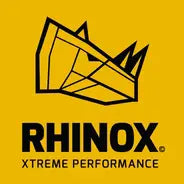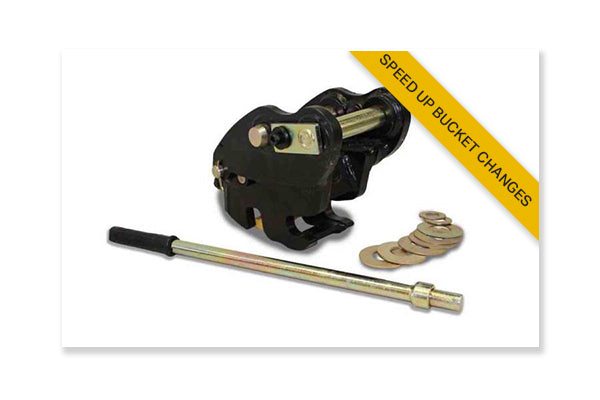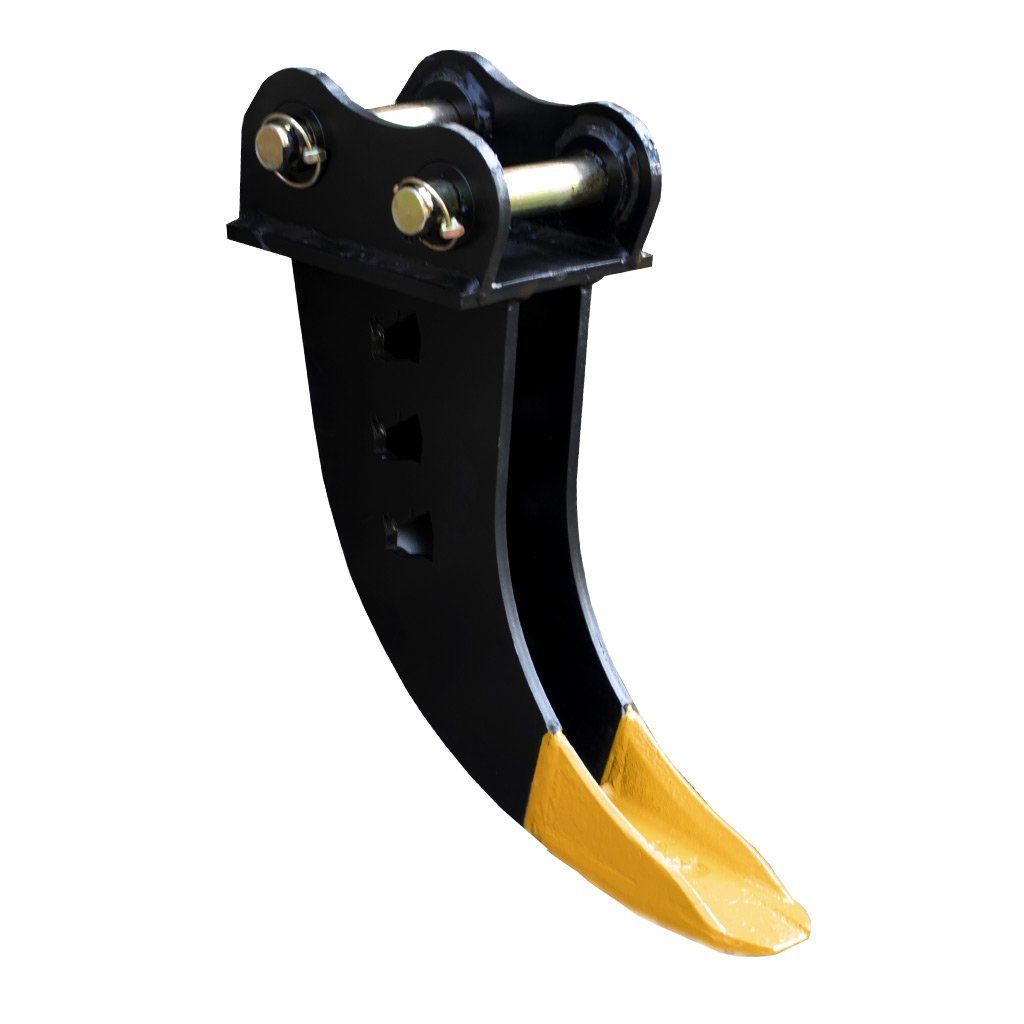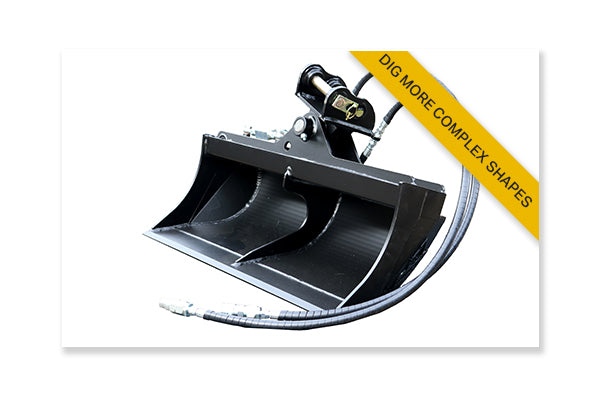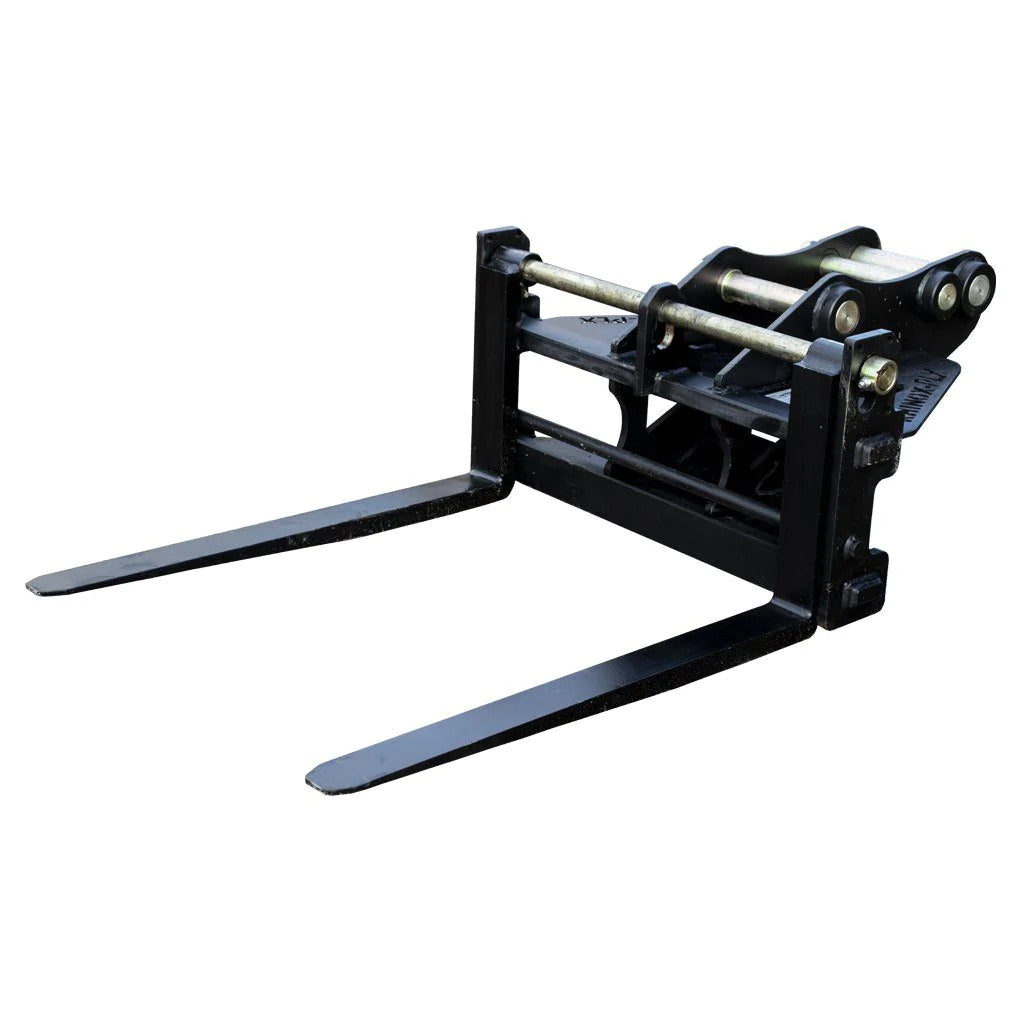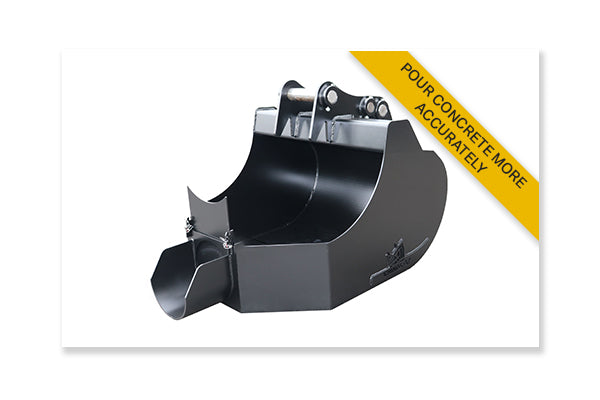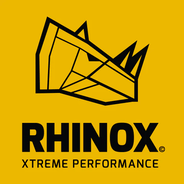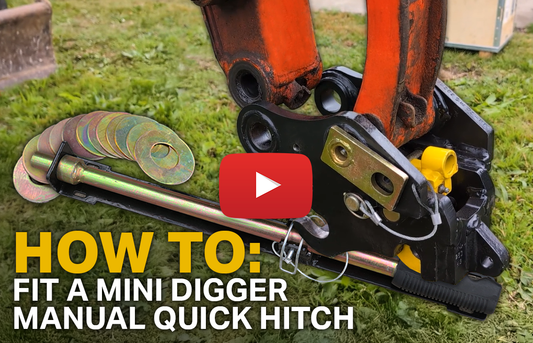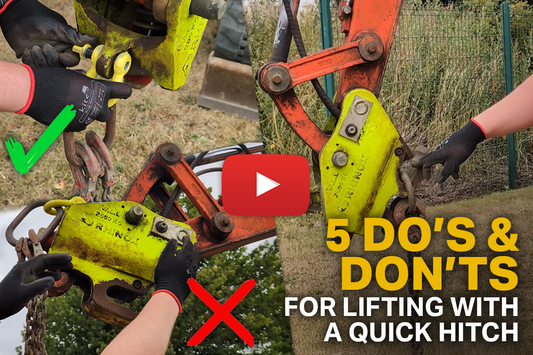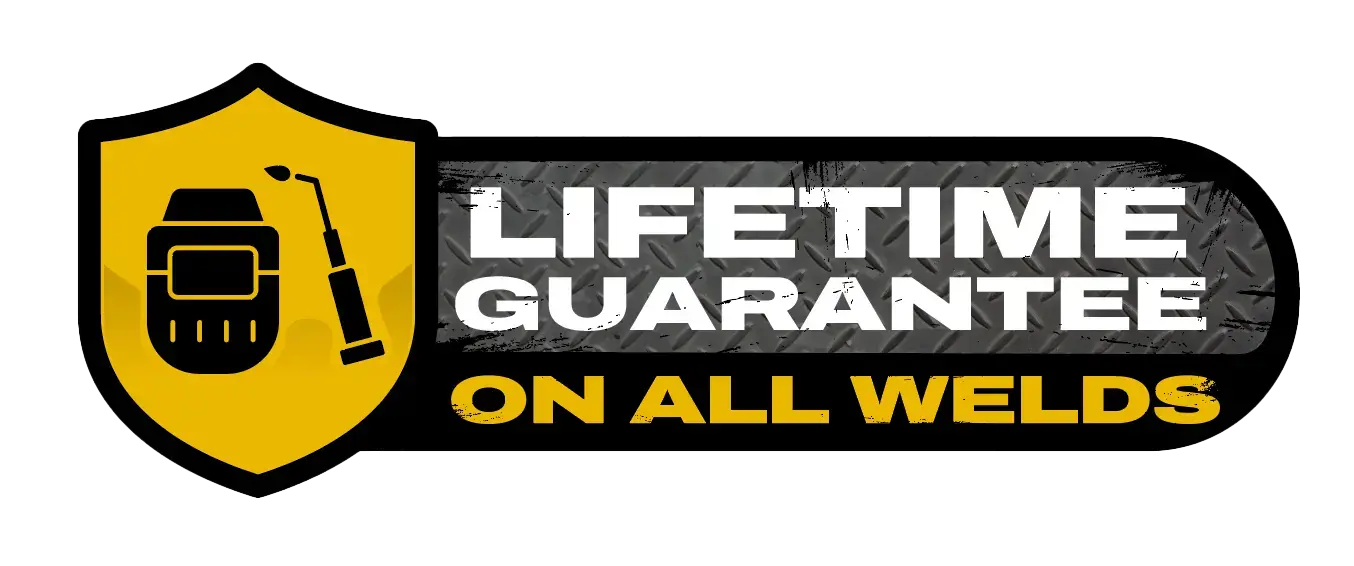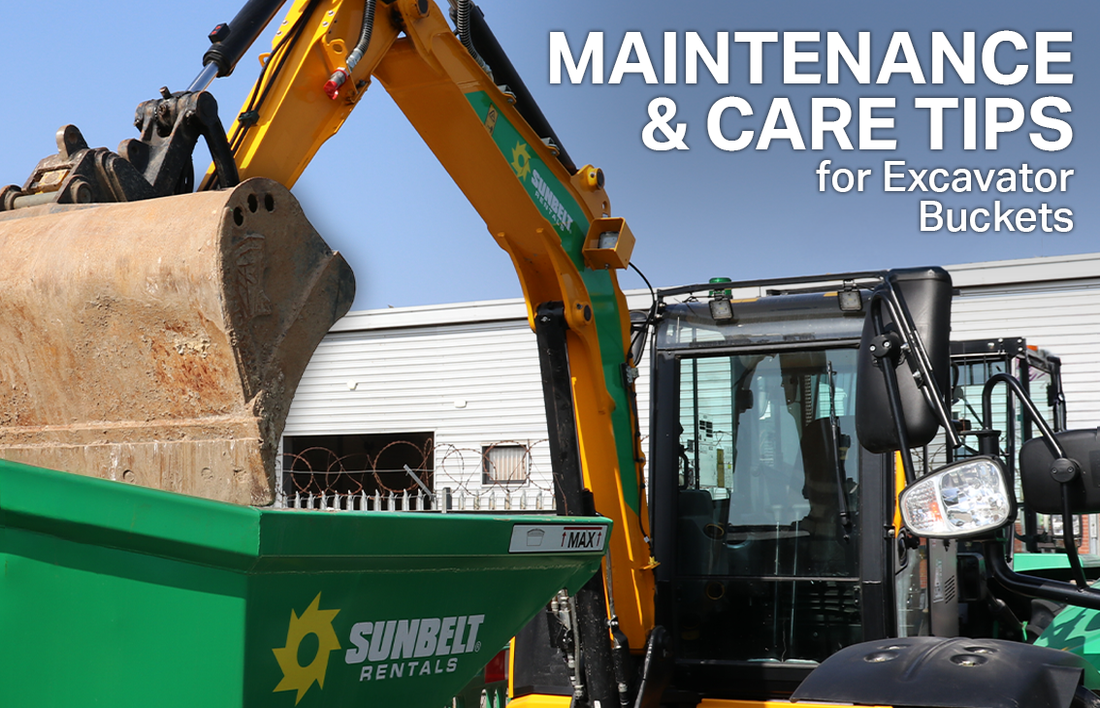
Maintenance & Care Tips for Excavator Buckets
Excavator buckets are among the most crucial components on any construction or excavation site. They endure constant wear and tear, often in harsh and demanding environments. Without proper maintenance and care, even the highest-quality buckets can fail prematurely, resulting in costly downtime, reduced efficiency and expensive repairs. To help you keep your equipment running smoothly, here are the most important digger bucket maintenance and care tips every operator and site manager should follow.

Digger Bucket Maintenance Tips
Keep the Bucket Clean & Free from Debris
Keeping your excavator buckets clean and free from debris is a simple but essential part of maintenance that can significantly impact your bucket's lifespan. Over time, materials like dirt, clay and rocks can build up inside and around the bucket, adding unnecessary weight and reducing your bucket's capacity and digging efficiency. This extra weight puts added strain on the machine’s arm and hydraulic systems and can conceal early signs of cracks, wear or corrosion that could be forming on your bucket. After each use - especially when working with sticky or wet materials - it's important to clean the bucket thoroughly. Use pressure washers, hoses, scrapers or degreasers to remove debris, paying close attention to corners and edges where build-up is common.
Monitor and Replace Worn Cutting Edges (Teeth & Blades)

The cutting edge, or lip plate, is one of the main wear points on your excavator bucket. Whether your bucket is fitted with teeth or a blade, your cutting edge takes the most impact during digging and grading jobs. Because of this, it’s often the first area to show signs of wear, and monitoring it closely is essential to preserving both performance and structural integrity of your bucket. Using replaceable wear parts like bolt-on cutting edges, weld-on blades or bucket teeth (bolt-on teeth or CAT-style teeth) can greatly extend the life of your bucket by shielding the bucket lip plate from direct wear. Bolt-on blades are especially practical, as they’re reversible and easy to replace - just remember to rotate or replace them once the wear reaches the level of the lip plate. If you continue using a worn blade beyond this point, you risk grinding into the bucket edge itself, which can eventually damage the welds that join the base of the bucket to the sidewalls. At that stage, repairs become far more extensive and expensive, or you may be forced to replace the entire bucket. Teeth are particularly useful when digging in tough materials, but they must be checked regularly, as they can wear down or even fall off during use. Operating with missing teeth exposes the lip plate - or adapter shank, in the case of CAT-style teeth - which can quickly become damaged and make future replacements difficult or impossible. To avoid these issues, inspect the cutting edge after every use and replace worn or missing teeth and blades promptly. Proper care of your cutting edges not only improves digging efficiency and reduces fuel consumption, but also helps prevent costly structural damage.

Check for Structural Fatigue & Digger Bucket Repairs
Despite regular care, excavator buckets are still vulnerable to structural fatigue and damage over time, making it essential to conduct regular inspections and carry out timely repairs. Signs that a bucket may need immediate attention include visible cracks or fractures in the structure, severe deformation or bending of the bucket shell that affects digging performance, and excessive wear on the cutting edges beyond the protection of wear blades. While minor issues can often be addressed on-site, such as tightening loose bolts, more serious structural damage typically requires professional repair. Untreated cracks can worsen and lead to more serious structural failure. After repairs are completed, a functionality test should be performed to make sure the repair is satisfactory and the issue doesn't worsen.
Lubricate Pins and Bushes RegularlyLubricating your excavator's pins and bushes is a critical job that keeps your machine running smoothly and to prevent costly repairs. These pivot points are essential to the movement and flexibility of the bucket, and they endure constant stress from digging, lifting and rotating. Without proper lubrication, friction increases between the metal surfaces, leading to accelerated wear, overheating and potential pivot point failure. Over time, dirt and dust can degrade the grease, reducing its effectiveness, so it’s important to regularly clean these areas and reapply fresh, temperature-appropriate grease before every use. Check regularly for signs of dry joints, such as squeaking, resistance in movement or visible scoring on the pin surfaces. Proper lubrication not only extends the life of pins and bushings but also maintains smooth, responsive operation and reduces the risk of unexpected downtime. |
Digger Bucket Care Tips
Inspect Before and After Every Job
Just as you should be inspecting your excavator before and after every use, you should also be inspecting your digger buckets. Proper care of digger buckets begins with routine inspection and thorough cleaning after each use. Before and after operation, carefully examine the bucket for any signs of wear such as cracks or weakened welds - particularly along the cutting edges, which are prone to heavy wear when digging and grading. Alongside visual checks, stay alert for abnormal sounds during use - grinding, clunking or scraping noises may signal loose bolts or misaligned parts. Identifying and resolving these issues early can help avoid more serious equipment failures and extend the lifespan of your bucket.
Skilled Excavator Operator & Operator Training
Even with a solid maintenance routine, improper operation can lead to excessive wear and early failure of digger buckets. Being a skilled operator or having proper operator training is key to protecting your digger bucket from unnecessary wear and damage. When you know how to use the machine correctly, you avoid applying too much force, twisting or prying, which can crack or bend the bucket. You must be able to recognise tough ground conditions where an alternative excavator attachment may be required, like a ripper tooth or hydraulic breaker. By avoiding overloading or using your buckets outside of the intended limits, you prevent stress that can lead to early failure. Most importantly, when you understand how the machine feels and sounds, you can catch early signs of wear before they turn into costly repairs - ultimately saving time, money and extending the life of your equipment.
Choose the Correct Bucket or AttachmentIt's important to know when you're using the best excavator bucket or attachment for the job. With the wide range of digger attachments available on the market today, you have the tools to work more efficiently, safely and with less wear on your equipment. For example, your standard excavator digging buckets are ideal for general purpose digging and bulk moving material, but when you're dealing with rocky, compact or frozen ground, it's better to use a ripper tooth first to break up the surface. This helps protect the bucket teeth and maintain the structural integrity of your bucket. Choosing the right attachment for each task not only improves yours performance but also reduces unnecessary stress and wear on both your excavator and your attachments. |
Ready to Take Action?
Proper maintenance and care of your excavator buckets is more than just a best practice, it’s an investment in the performance, efficiency and longevity of your entire machine. By staying on top of cleaning, inspections, lubrication, repairs and operator training, you can significantly reduce wear and tear, prevent costly breakdowns, and ensure your buckets perform at their best on every job. Taking the time to choose the right attachment and maintain it properly will keep your projects running smoothly and your equipment in peak condition. Treat your digger bucket with the same respect you give the machine it’s attached to, and it will reward you with years of reliable service.
Further Reading
- Choosing the Right Grease for your Excavator
-
Types of Excavator Bucket Pins & Best Uses
-
Should you repair or replace your digger buckets?
-
Are you misusing your digger buckets?
- Excavator Digging Buckets - Teeth VS Blades
